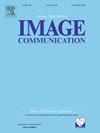Adaptive spatially regularized target attribute-aware background suppressed deep correlation filter for object tracking
IF 2.7
3区 工程技术
Q2 ENGINEERING, ELECTRICAL & ELECTRONIC
引用次数: 0
Abstract
In recent years, deep feature-based correlation filters have attained impressive performance in robust object tracking. However, deep feature-based correlation filters are affected by undesired boundary effects, which reduce the tracking performance. Moreover, the tracker moves towards a region that is identical to the target due to the sudden variation in target appearance and complicated background areas. To overcome these issues, we propose an adaptive spatially regularized target attribute-aware background suppressed deep correlation filter (ASTABSCF). To do this, a novel adaptive spatially regularized technique is presented, which aims to learn an efficient spatial weight for a particular object and fast target appearance variations. Specifically, we present a target-aware background suppression method with dual regression approach, which utilizes a saliency detection technique to produce the target mask. In this technique, we employ the global and target features to get the dual filters known as the global and target filters. Accordingly, global and target response maps are produced by dual filters, which are integrated into the detection stage to optimize the target response. In addition, a novel adaptive attribute-aware approach is presented to emphasize channel-specific discriminative features, which implements a post-processing technique on the observed spatial patterns to reduce the influence of less prominent channels. Therefore, the learned adaptive spatial attention patterns significantly reduce the irrelevant information of multi-channel features and improve the tracker performance. Finally, we demonstrate the efficiency of the ASTABSCF approach against existing modern trackers using the OTB-2013, OTB-2015, TempleColor-128, UAV-123, LaSOT, and GOT-10K benchmark datasets.
自适应空间正则化目标属性感知背景抑制深度相关滤波器
近年来,基于深度特征的相关滤波器在鲁棒目标跟踪方面取得了令人瞩目的进展。然而,基于深度特征的相关滤波器会受到不期望的边界效应的影响,从而降低跟踪性能。此外,由于目标外观的突然变化和背景区域的复杂,跟踪器会向与目标相同的区域移动。为了克服这些问题,我们提出了一种自适应空间正则化目标属性感知背景抑制深度相关滤波器(ast脓f)。为此,提出了一种新的自适应空间正则化技术,该技术旨在学习特定目标的有效空间权重和快速目标外观变化。具体而言,我们提出了一种基于对偶回归方法的目标感知背景抑制方法,该方法利用显著性检测技术产生目标掩模。在该技术中,我们利用全局和目标特征来得到双滤波器,即全局和目标滤波器。因此,由双滤波器生成全局和目标响应图,并将其集成到检测阶段以优化目标响应。此外,提出了一种新的自适应属性感知方法来强调信道特定的判别特征,该方法对观测到的空间模式实施后处理技术,以减少不太突出的信道的影响。因此,学习到的自适应空间注意模式显著减少了多通道特征的不相关信息,提高了跟踪器的性能。最后,我们使用OTB-2013、OTB-2015、TempleColor-128、无人机-123、LaSOT和GOT-10K基准数据集演示了astabf方法对现有现代跟踪器的效率。
本文章由计算机程序翻译,如有差异,请以英文原文为准。
求助全文
约1分钟内获得全文
求助全文
来源期刊

Signal Processing-Image Communication
工程技术-工程:电子与电气
CiteScore
8.40
自引率
2.90%
发文量
138
审稿时长
5.2 months
期刊介绍:
Signal Processing: Image Communication is an international journal for the development of the theory and practice of image communication. Its primary objectives are the following:
To present a forum for the advancement of theory and practice of image communication.
To stimulate cross-fertilization between areas similar in nature which have traditionally been separated, for example, various aspects of visual communications and information systems.
To contribute to a rapid information exchange between the industrial and academic environments.
The editorial policy and the technical content of the journal are the responsibility of the Editor-in-Chief, the Area Editors and the Advisory Editors. The Journal is self-supporting from subscription income and contains a minimum amount of advertisements. Advertisements are subject to the prior approval of the Editor-in-Chief. The journal welcomes contributions from every country in the world.
Signal Processing: Image Communication publishes articles relating to aspects of the design, implementation and use of image communication systems. The journal features original research work, tutorial and review articles, and accounts of practical developments.
Subjects of interest include image/video coding, 3D video representations and compression, 3D graphics and animation compression, HDTV and 3DTV systems, video adaptation, video over IP, peer-to-peer video networking, interactive visual communication, multi-user video conferencing, wireless video broadcasting and communication, visual surveillance, 2D and 3D image/video quality measures, pre/post processing, video restoration and super-resolution, multi-camera video analysis, motion analysis, content-based image/video indexing and retrieval, face and gesture processing, video synthesis, 2D and 3D image/video acquisition and display technologies, architectures for image/video processing and communication.
 求助内容:
求助内容: 应助结果提醒方式:
应助结果提醒方式:


